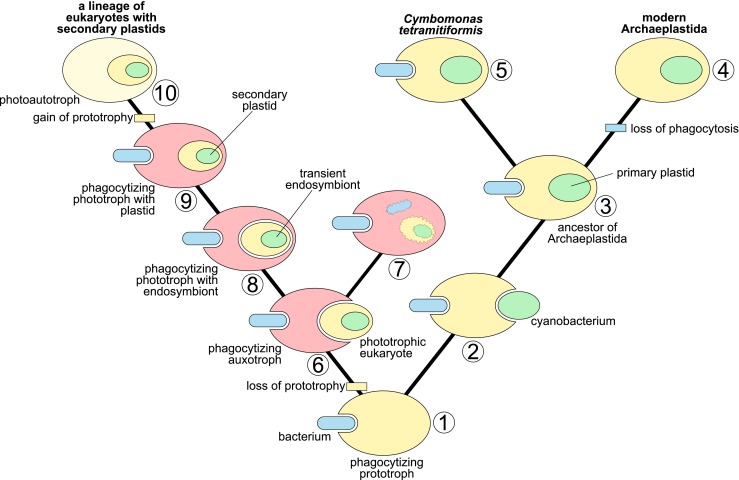Fig. 1.

Evolution of trophic strategies in eukaryotes in the context of plastid endosymbiosis and phylogenetic position of Cymbomonas tetramitiformis. It is assumed that the early eukaryotes were prototrophs feeding via phagocytosis (1). This trophic strategy played an important role in the acquisition of a cyanobacterium (2), which was transformed into a primary plastid in the ancestor of Archaeplastida (3). Modern members of this supergroup lost the ability to phagocytose (4) with the exception of some marine prasinophytes including C. tetramitiformis (5). On the other hand, heterotrophic eukaryotes lost genes involved in the synthesis of small molecules and became auxotrophic phagotrophs (6). Some of their descendants are still auxotrophic phagotrophs (7), however, others have learned to profit from the prolonged upkeep of their photosynthetic prey (transient endosymbionts) and have become phototrophs (8). These phagocytizing phototrophs could, in the long term, acquire necessary genes via horizontal (including endosymbiotic) gene transfer to tighten the relationships with their endosymbionts following in footsteps of many secondary plastid-containing algae (9). Finally, they could reacquire the lost genes for small compounds, abandon phagotrophy, and become strict phototrophs (i.e. photoautotrophs) (10). The horizontal (including endosymbiotic) gene transfer plays an important role also at all presented stages of the model
